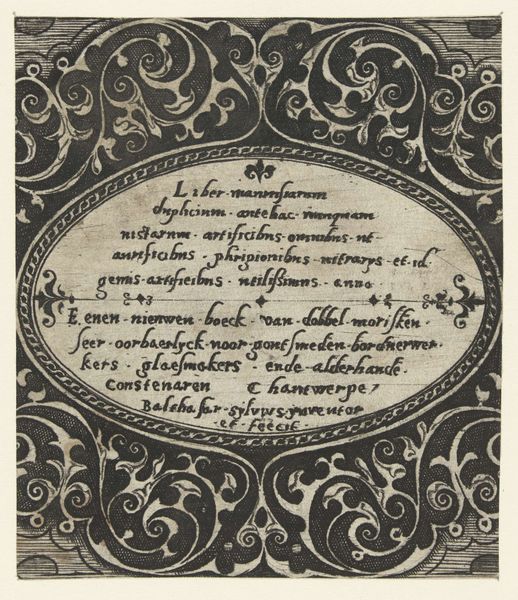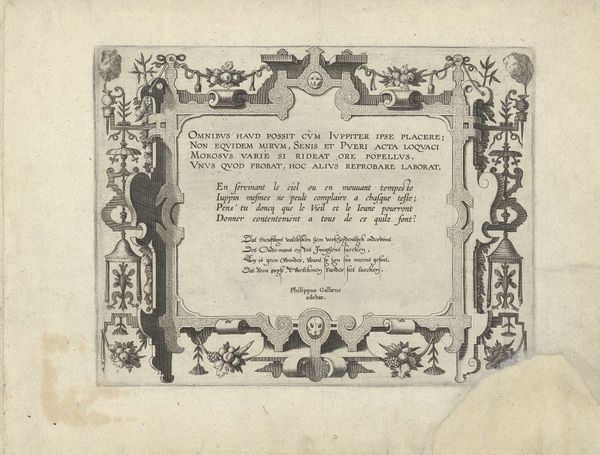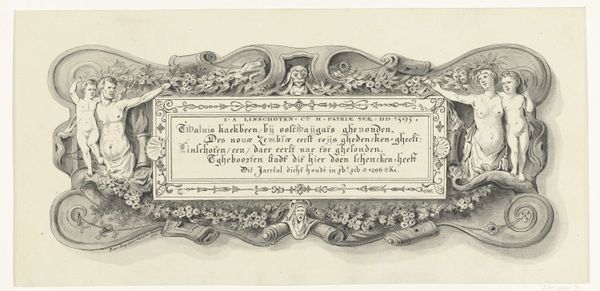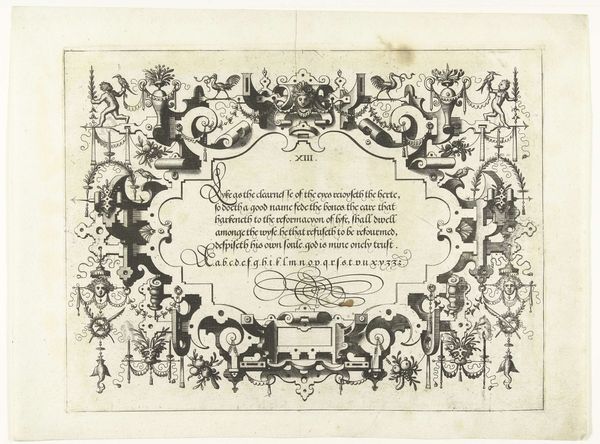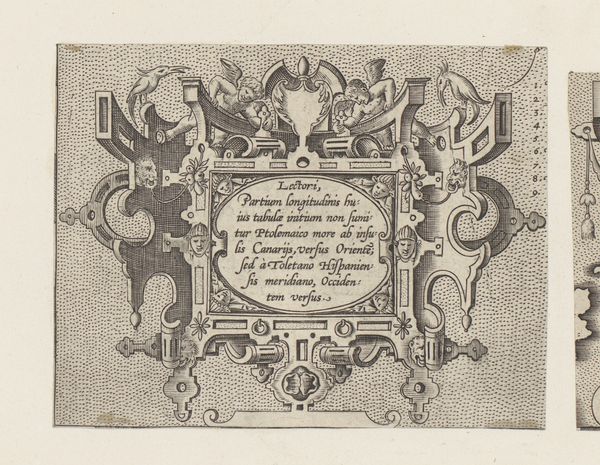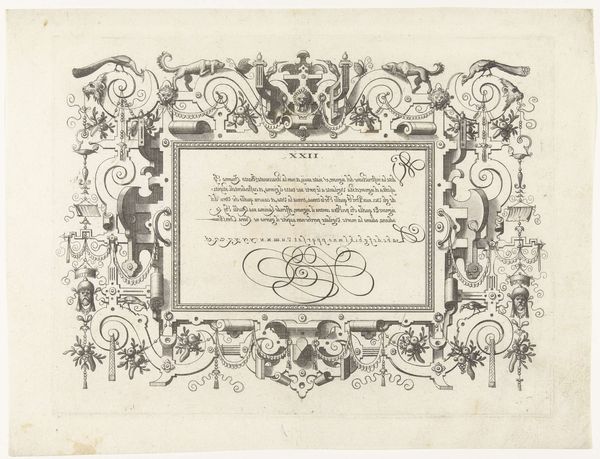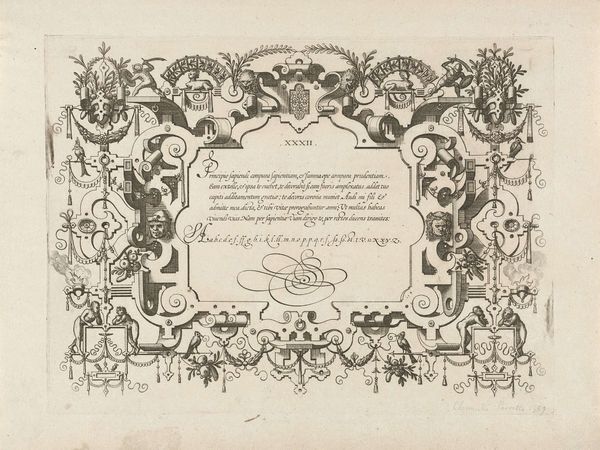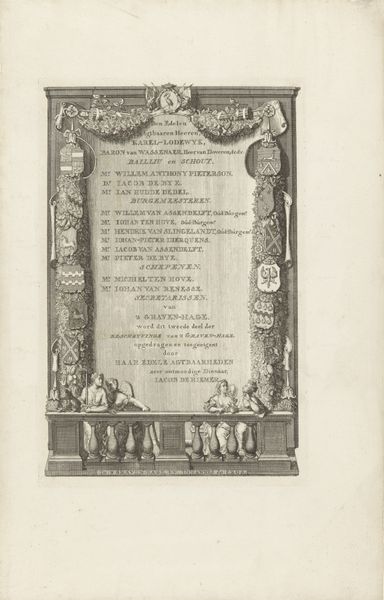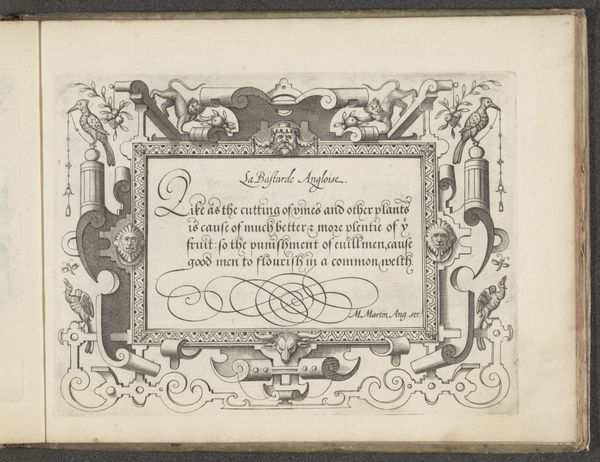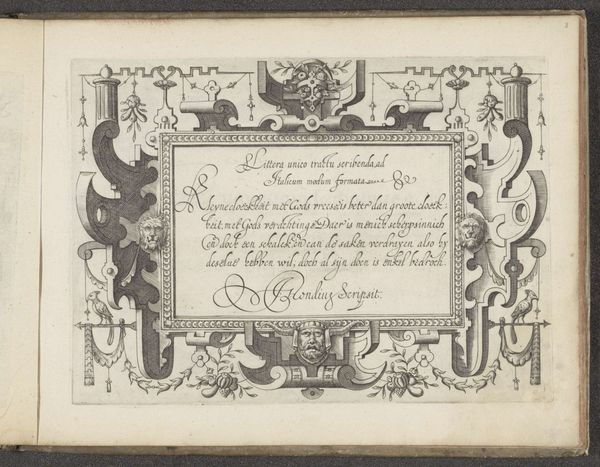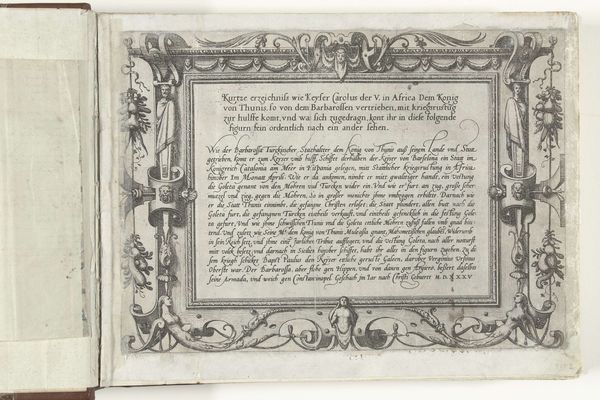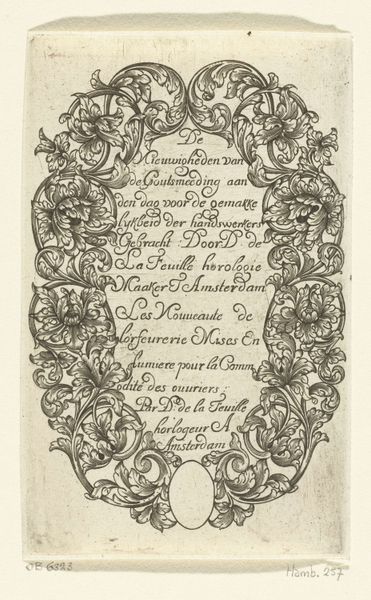
Titelblad: Grottesco: in diversche manieren… 1565 - 1571
0:00
0:00
johannesoflucasvandoetechum
Rijksmuseum
graphic-art, print, engraving
#
graphic-art
# print
#
mannerism
#
engraving
Dimensions: height 159 mm, width 209 mm
Copyright: Rijks Museum: Open Domain
Editor: So, here we have this rather fascinating engraving titled "Titelblad: Grottesco: in diversche manieren…" dating back to around 1565-1571, created by Johannes or Lucas van Doetechum. It's held at the Rijksmuseum. The whole piece is incredibly intricate and fantastical; I am wondering how the artistic style ties to the period in which it was created. How do you interpret this work in terms of its historical and cultural context? Curator: That's a great question. As a historian, I'm particularly interested in how this print reflects the Mannerist style prevalent at the time and its function within the broader artistic and social landscape. Notice how the print presents itself as a template "for painters, glassmakers, sculptors", pointing to a burgeoning commercial market for artistic patterns. It suggests that art-making was becoming increasingly influenced by market demand. How does this impact the artist, and their status in society? Editor: That is interesting. It seems to turn artists into distributors, not necessarily focused on unique oeuvres? Curator: Precisely! And we have to remember, prints were incredibly important in disseminating artistic ideas and styles across Europe at the time. So, this "Grottesco" becomes part of a larger visual culture shaped by both artists and the printing industry. How does this influence your perspective of museums and the historical role and presentation of art? Editor: So the piece’s value lies not only in its aesthetic, but also its socio-political impact… it’s quite enlightening to consider art’s active public role back then. Curator: Exactly! Analyzing this from the perspective of historical reception enriches our understanding not only of the artwork itself but also the forces that shaped the era. Editor: Thank you so much! This new interpretation helps me appreciate its place and artistic ingenuity on another level.
Comments
No comments
Be the first to comment and join the conversation on the ultimate creative platform.
